Navarra, XVII Century
Facsimile of 17th century Spanish-suited playing cards produced by Erregeak, Sormen S.A., Vitoria-Gasteiz (Álava), Spain, 1988.

Facsimile playing cards reproduced from proof sheets taken from XVII century woodblocks preserved in the Fournier Playing Card Museum, Álava, Vitoria-Gasteiz, Spain
Produced by Erregeak, 1988, in a limited edition of 400 copies. The Ace of Coins has a twin-headed imperial eagle and the arms of Navarre, although no actual manufacturer or location is named, apart from I.O. on the three of batons. Several archaic features found on early Spanish decks include the King of Coins wielding a battle axe and the cavalier of coins in three-quarters rear position. However, in some respects the figures are more stiff and less playful than, for example, Phelippe Ayet from a century earlier. The colour scheme has been taken from other packs of the same era.
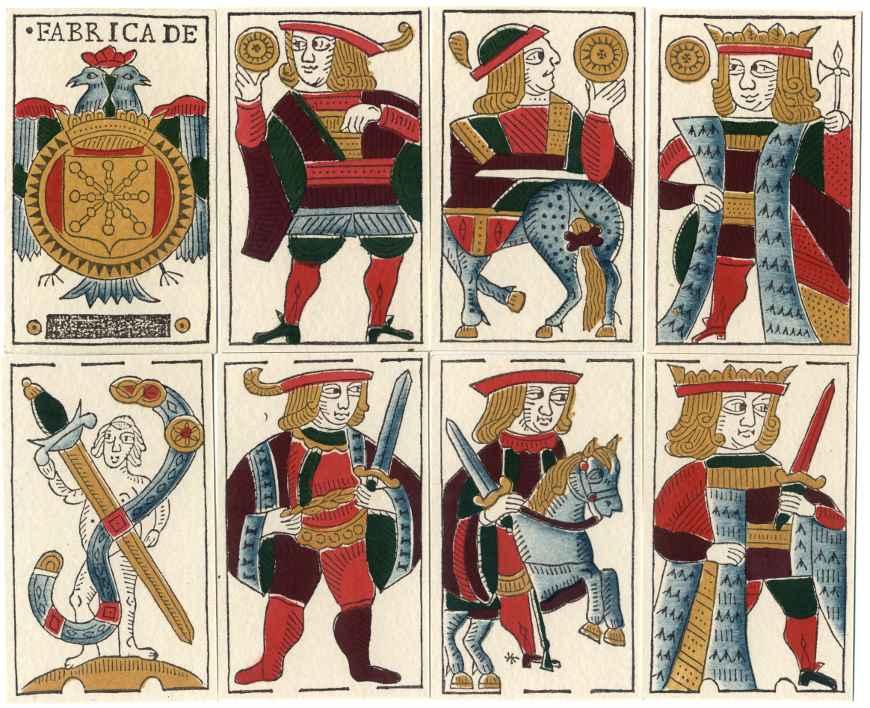
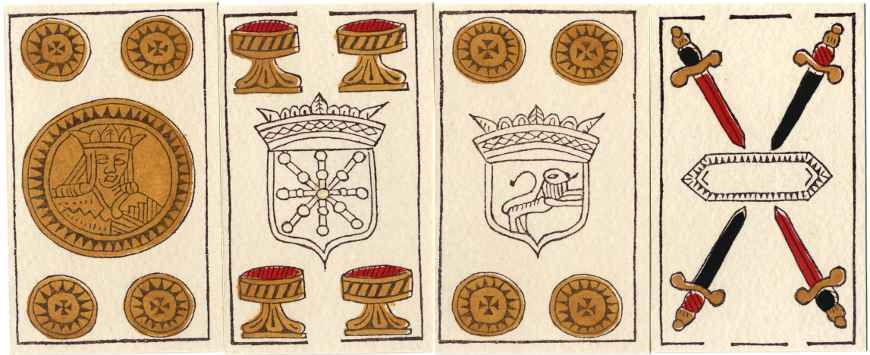
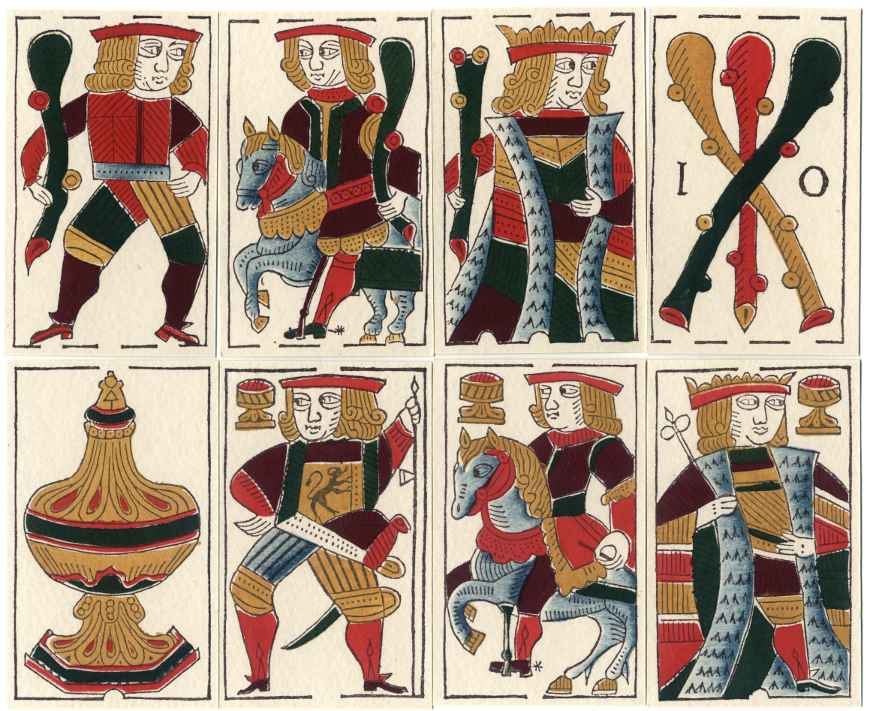
Above: facsimile of 17th century Spanish-suited playing cards which would originally have been made in or for the region of Navarre in Northern Spain. Limited edition of 400 copies, produced by Erregeak, Sormen S.A., Vitoria-Gasteiz (Álava), Spain, 1988. The Sota of Cups has a lion insignia on the breast of his tunic which also appears on the Four of Coins. The Five of Coins features a single bust in the central coin, instead of two facing busts as seen in earlier examples which depicted the Catholic monarchs Ferdinand and Isabella.
By Simon Wintle
Spain • Member since February 01, 1996 • Contact
I am the founder of The World of Playing Cards (est. 1996), a website dedicated to the history, artistry and cultural significance of playing cards and tarot. Over the years I have researched various areas of the subject, acquired and traded collections and contributed as a committee member of the IPCS and graphics editor of The Playing-Card journal. Having lived in Chile, England, Wales, and now Spain, these experiences have shaped my work and passion for playing cards. Amongst my achievements is producing a limited-edition replica of a 17th-century English pack using woodblocks and stencils—a labour of love. Today, the World of Playing Cards is a global collaborative project, with my son Adam serving as the technical driving force behind its development. His innovative efforts have helped shape the site into the thriving hub it is today. You are warmly invited to become a contributor and share your enthusiasm.

Related Articles
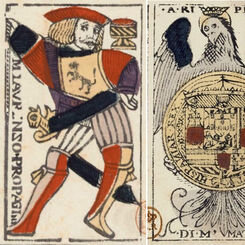
Laurenzo Propagine
Spanish-suited cards made in Italy by Laurenzo Propagine.

Archaic Spanish proof sheets
2 x uncoloured proof sheets of archaic Spanish-suited playing cards produced for “New Spain”, possib...
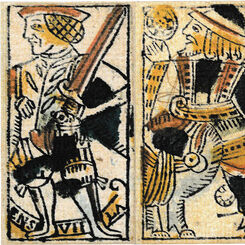
Sevilla 1647 reproduction
Facsimile of Spanish-suited pack produced in Sevilla, Spain, 1647.
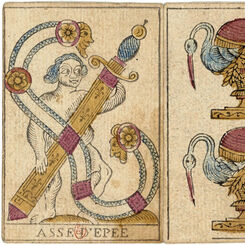
Pierre Roiné Aluette
Archaic form of Aluette published by Pierre Roiné, Nantes, c.1785.
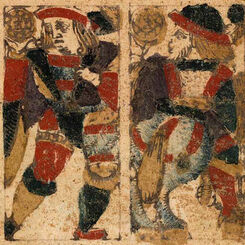
Toledo, 1584
Archaic Spanish-suited deck with 48 cards made in Toledo in 1584.
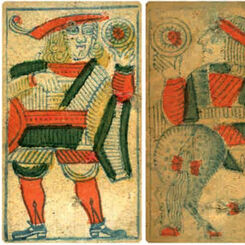
Pedro Varangot, 1786
Archaic Navarra pattern produced for the Pamplona General Hospital Monopoly by Pedro Varangot in 178...
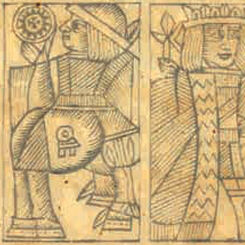
Navarra Pattern, 1682
Navarra pattern produced for the Pamplona General Hospital Monopoly in 1682.
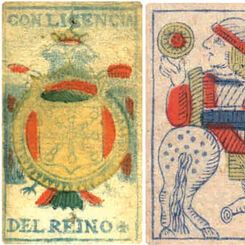
Navarra Pattern
Navarra Pattern produced for the Pamplona General Hospital Monopoly.
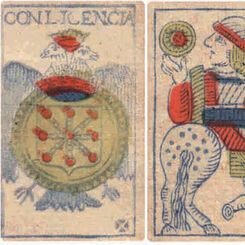
Navarra Pattern, 1793
Navarra pattern by an unknown cardmaker with initials I. I., 1793.
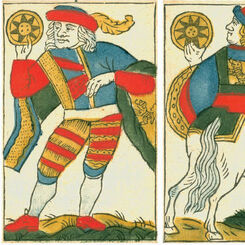
Anonymous Spanish Suited pack, c.1760
Anonymous archaic Spanish suited pack, c.1760.
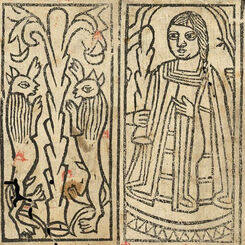
XV Century Catalan playing cards
XV Century Catalan Playing Cards, featuring four female Sotas, four Aces and four cards from the sui...
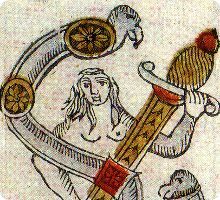
Joan Barbot
Joan Barbot, San Sebastian c.1765-1810.
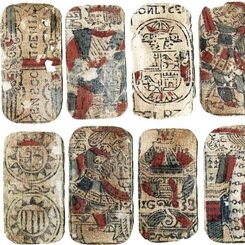
Tax on Spanish Playing Cards
Taxation on Spanish playing cards, the monopolies and smuggling.
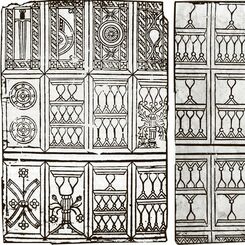
Moorish playing cards
These two uncoloured, uncut sheets of early Moorish playing cards were formerly preserved in the Ins...

Gothic Spanish-suited cards
These cards may be a typical example of early 'standard' Spanish playing cards, maybe from before Co...
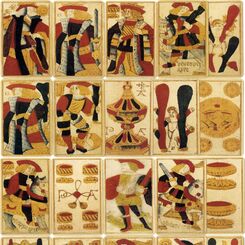
Phelippe Ayet, c.1574
Archaic, late medieval Spanish-suited playing cards printed by Phelippe Ayet, c.1574.
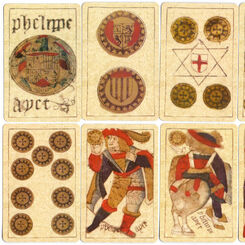
Phelippe Ayet, 1574
49 assorted cards were found hidden in the lintel of a doorway, in an old building in Toledo, during...
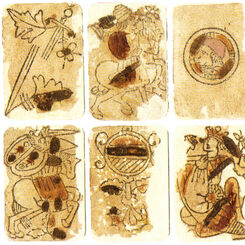
Baraja Morisca — Early XV century playing cards
Primitive Latin suited pack, dated by paper analysis as early XV century, which makes this one of th...
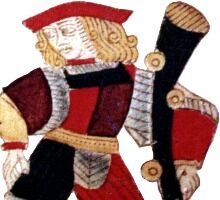
Spanish National Pattern
Probably originating in Spain in the seventeenth century or even earlier, this pattern became strong...
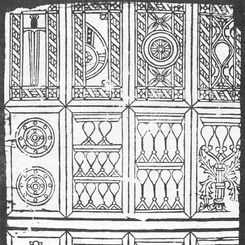
A Moorish Sheet of Playing Cards
This article was originally published in “The Playing-Card”, the Journal of the International Playin...
Most Popular
Our top articles from the past 60 days






















